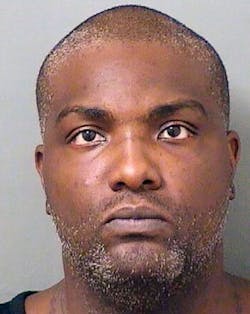How to Catch A Criminal: Nasty Habit Leads Police to Nasty Killer
Every officer with a decent amount of time on the job knows the unexpected turns an investigation can take. Seeing a major case through to completion often involves giving up on a theory and taking your investigation in a different direction as new information becomes available. In How to Catch A Criminal, we look at the many ways not-so-perfect crimes are solved. This month, a serial killer’s bad habits get the best of him.
Just as there is no such thing as a perfect crime, there is no such thing as a perfect criminal. At times, fugitives, killers, and even petty crooks manage to stay one step ahead of Law Enforcement. However, it doesn’t take much street experience to realize that you will most likely have another crack at apprehending someone who previously avoided justice. That is because most criminals are creatures of habit. Some re-offend because they are emboldened by getting away with something. Others simply don’t fear the consequences of breaking the law. Regardless, it is only once they are behind bars that these people realize they should have quit while they were ahead.
The Christmas season is normally a time for giving, especially to those less fortunate members of society. In 2006 however, a sex worker in Daytona Beach, Florida, had something most precious taken from her instead. On December 26, 45-year-old Laquetta Mae Gunther, was found dead behind an auto parts store. She was dumped there, face down and nude, after being shot execution style. Laquetta hadn’t been seen for two days after missing Christmas Eve dinner. Her line of work of course came with risks, but Laquetta’s friends and family’s worst fears were realized that morning. Male DNA was collected from her body. Investigators initially believed Laquetta’s murder was personal, caused by someone, possibly a client, who held a grudge against her. The evidence of sexual activity, the execution, and the unceremonious treatment of her body fed this theory, however, that changed in a matter of weeks.
On January 14, 2006, another victim, 34-year-old Julie Green was discovered at a construction site. She, too, had been shot in the back of the head and dumped at the site nude, face down. Green was also a prostitute and was an acquaintance of Laquetta Gunther. Julie was last seen headed to a convenience store to use a pay phone on the night of January 13. In her case, no DNA was collected from the scene, however ballistic evidence was present. A .40 caliber shell casing was present at the scene, and a matching projectile was removed from Green’s body during the autopsy. With two victims from similar walks of life, known to each other, and killed in the same area, in the same manner, Investigators were faced with two distinct possibilities: someone happened to hold a grudge against both women, or there was a killer targeting vulnerable members of society, and nothing was stopping them from killing again.
Just over a month later, on February 24, 2006, Daytona Beach Police learned of a third murder victim. The body of 35-year-old Iwana Patton was discovered on a dirt road by a passerby. Iwana was also shot in the head, and dumped on the road, face down and nude. Unlike the previous victims, Iwana Patton was shot in the front of her head rather than in the back. This indicated she may have struggled with her killer before he was able to shoot her in his usual fashion. A 40. caliber shell casing was found at the scene, as well as male DNA taken from Patton’s body. The casing was matched to the same gun used to kill Julie Green, and the DNA was a match to the sample collected from Laquetta Gunther’s body. There was no longer any doubt that a serial killer was responsible for all three murders. Also unlike the other victims, Iwana Patton was not a known to be a sex worker, which indicated the serial killer may have been expanding his victim pool.
The Daytona Beach Killer, as he was named, apparently took a break from killing for some time, but not for good. Just as fears of a killer on the loose began to subside, the body of 30-year-old Stacey Gage was found at an abandoned church on January 2, 2008. She was killed by a single gunshot wound to the head. Gage had been missing since December 11, 2007, when she left home to run an errand. While she was not a sex worker, she did have a history of drug problems. When she didn’t return home, her mother was concerned Stacey was using drugs once again. Investigators believe Stacey went to the church to meet someone, possibly to buy drugs, and she was shot and left there. While DNA and ballistic evidence from the scene were not enough to definitively tie Stacey Gage’s murder to the Daytona Beach Killer, it did serve as a reminder to the public that the killer was still at large.
A special unit was put together to catch the killer. Countless suspects were interviewed, and even more leads were chased. Ballistics experts were able to determine the firearm used in the first three killings was a Smith & Wesson Sigma Series VE. Detectives interviewed everyone in the area who had purchased that type of weapon, but nothing concrete was discovered. Eventually, the unit was disbanded after leads were exhausted, and the investigation came to a standstill. The Daytona Beach Killer, on the other hand, wasn’t done yet. More than eight years after Stacey Gage was murdered, 200 miles away, Palm Beach County Deputies located the body of 32-year-old Rachel Bey off a highway outside Jupiter, Florida. Bey had been beaten and, which was a stark contrast to the fates of the other victims. Bey did, however, have a history of prostitution. In the struggle for her life, Bey fought back and ended up with her attacker’s DNA on her body as a result. This DNA was collected and submitted for forensic testing. In December 2016, Daytona Beach Detectives learned the DNA matched the samples taken from Laquetta Gunther and Iwana Patton.
The chase was on once again, and thanks to advances in genetic genealogy, Detectives were able to find a distant relative of the killer’s. The Florida Department of Law Enforcement’s Genealogy Unit underwent the painstaking process of mapping out that relative’s family tree, until they were able to determine the most likely suspect. This individual had been interviewed by investigators in 2006 because he had purchased the same gun used in the killings. That individual’s name was Robert Hayes. At the time of the first murder Hayes was a 23-year-old Criminal Justice major and cheerleader at Bethune-Cookman College in Daytona Beach. When he was interviewed about the gun, he claimed to have given the gun to his mother for her own protection. Now living in Palm Beach County, Hayes was placed under surveillance while Detectives waited for their opportunity to collect definitive evidence. Their opportunity came in September of 2019 when Robert Hayes discarded a cigarette and a beer can at a bus stop. Detectives collected the items and sent them for testing, which quickly produced a match to DNA taken from the Laquetta Gunther and Iwana Patton. His mother would later deny ever being given the gun.
Robert Hayes was arrested on September 16, 2019, and went to trial for the murders of Laquetta Gunther, Julie Green, and Iwana Patton in 2022. He was found guilty for all three murders and sentenced to three consecutive life sentences. The trial for the murder of Rachel Bey is still pending. In the end it was Robert’s inability to kick his killing habit, and his smoking habit, that ended his days as a free man.
About the Author

Officer Brendan Rodela, Contributing Editor
Brendan Rodela is a Sergeant for the Lincoln County (NM) Sheriff's Office. He holds a degree in Criminal Justice and is a certified instructor with specialized training in Domestic Violence and Interactions with Persons with Mental Impairments.

